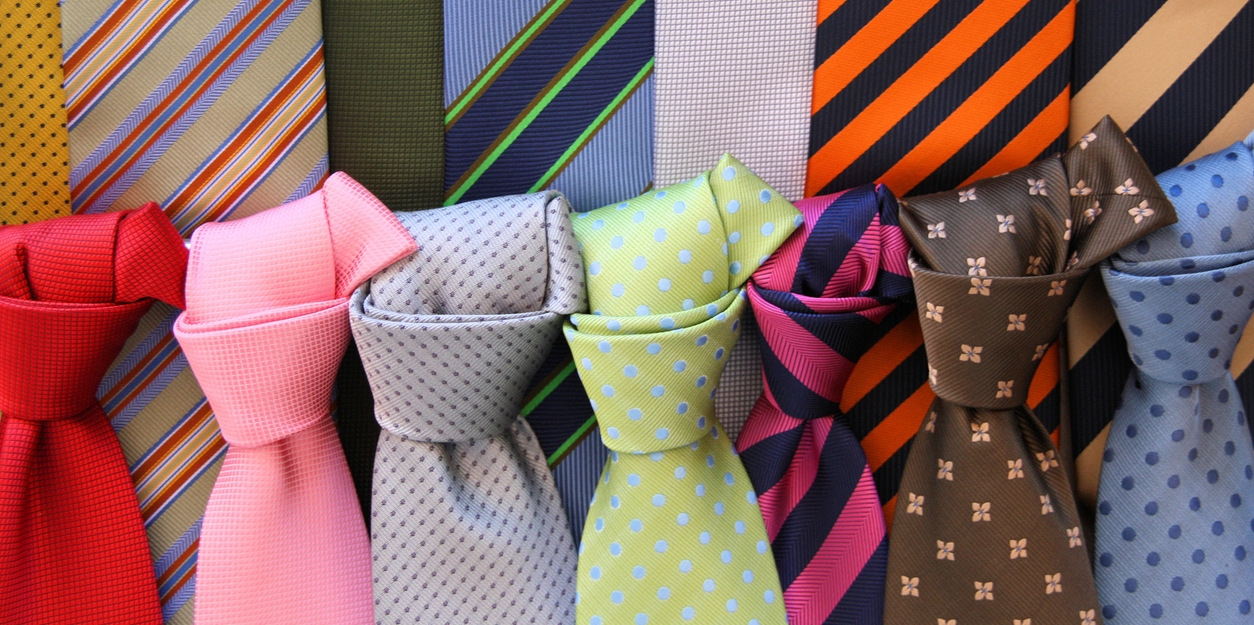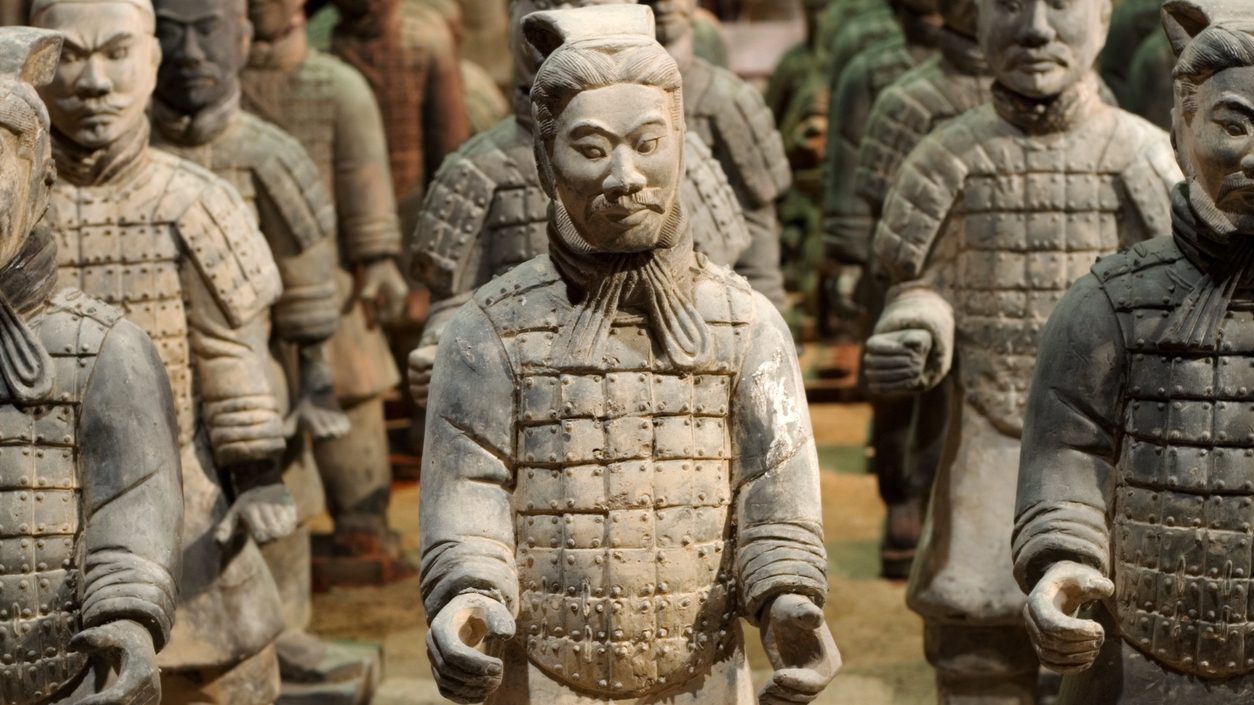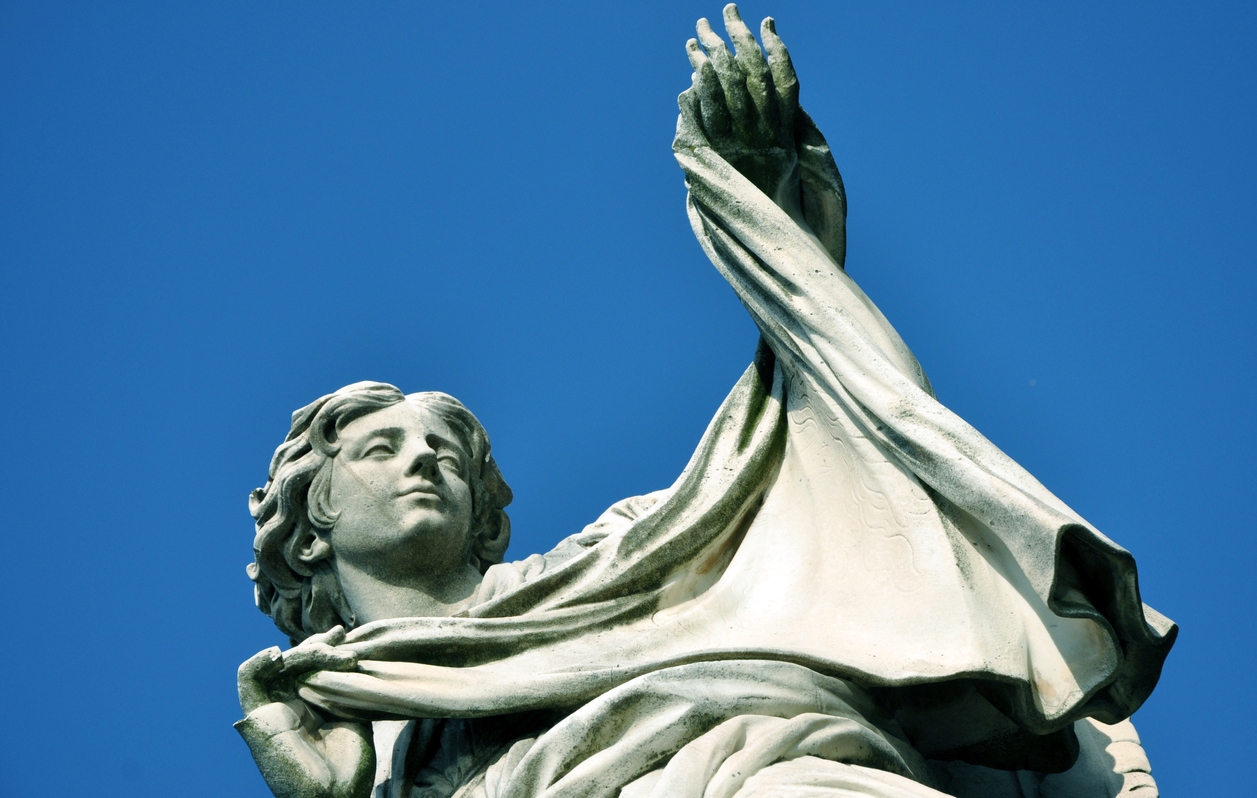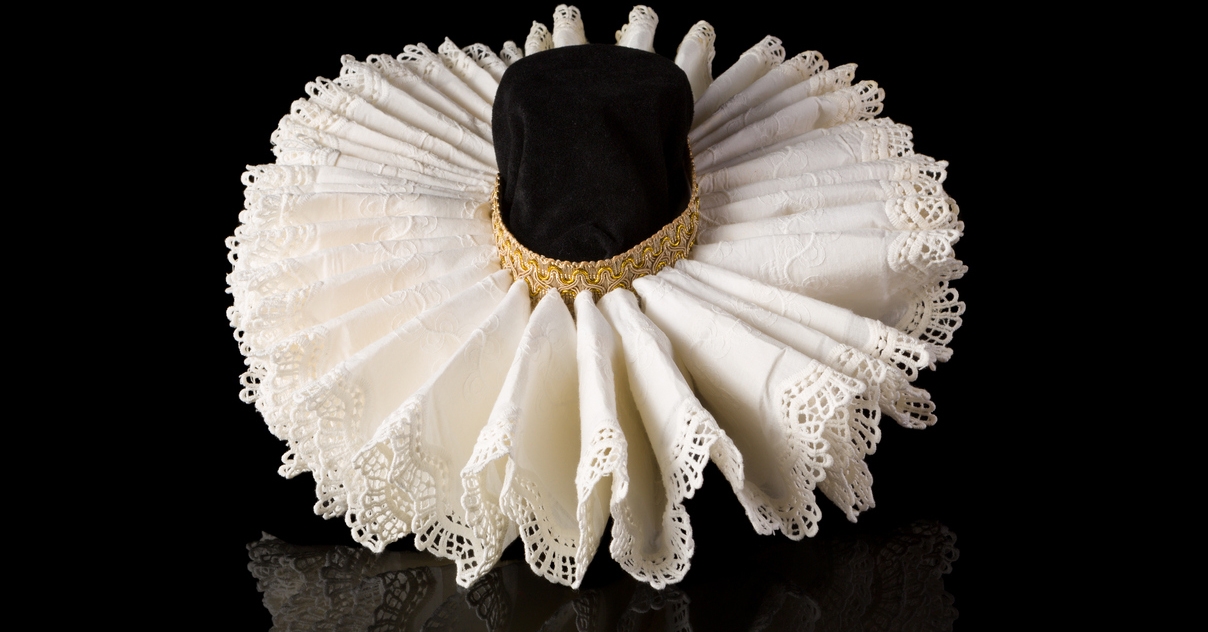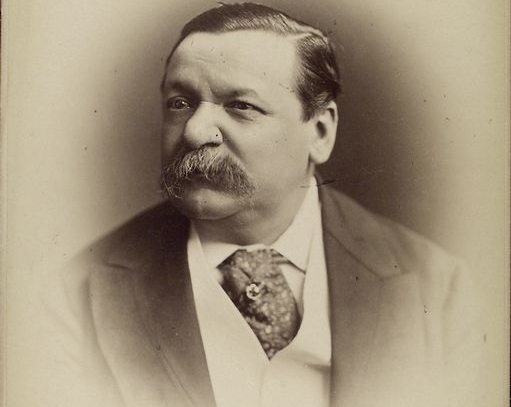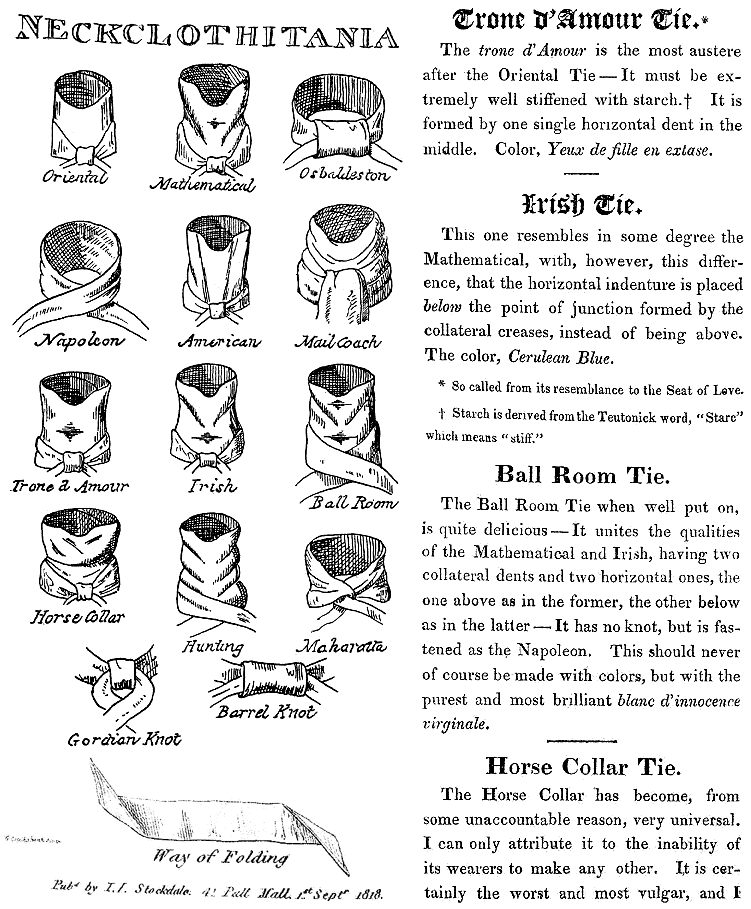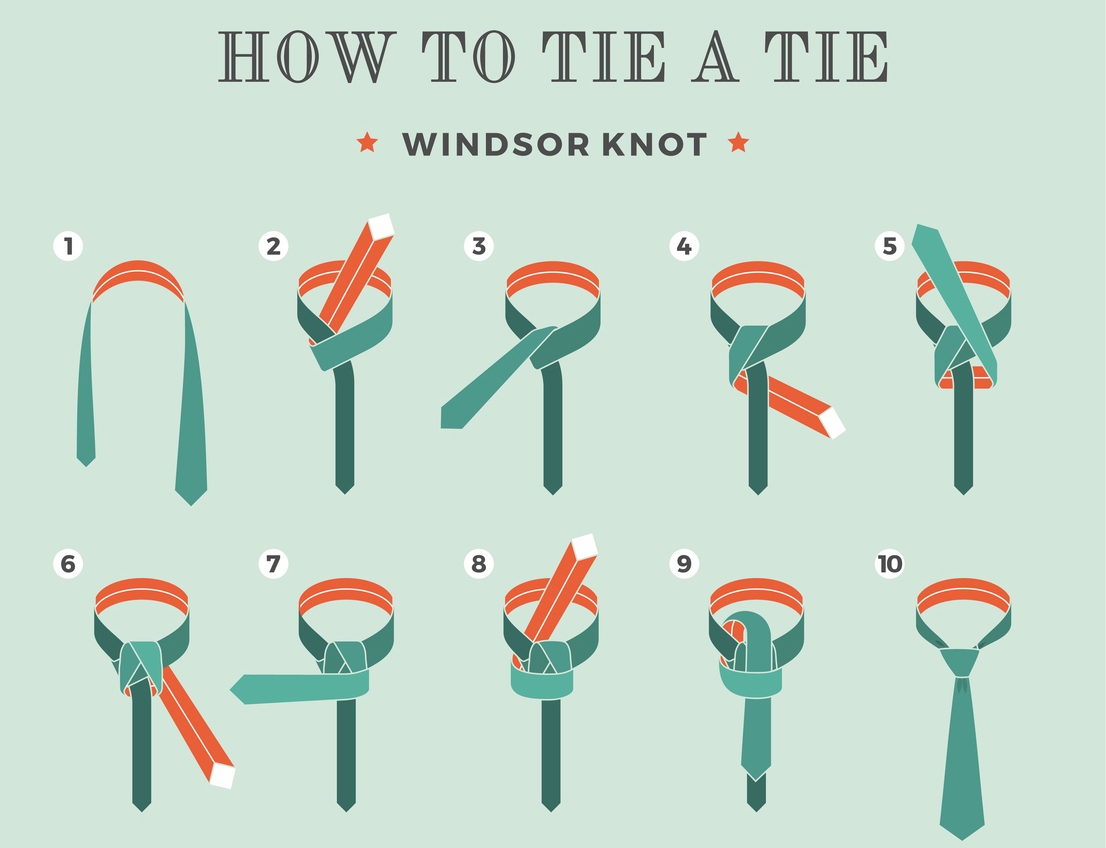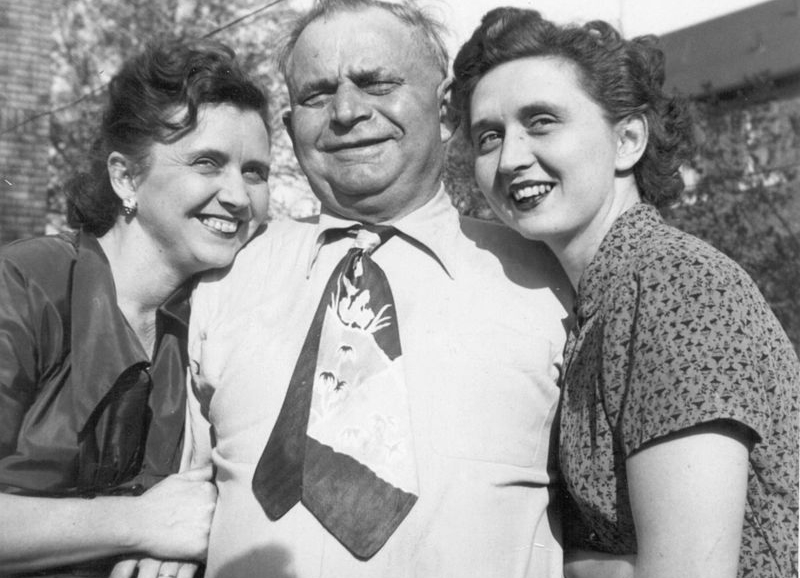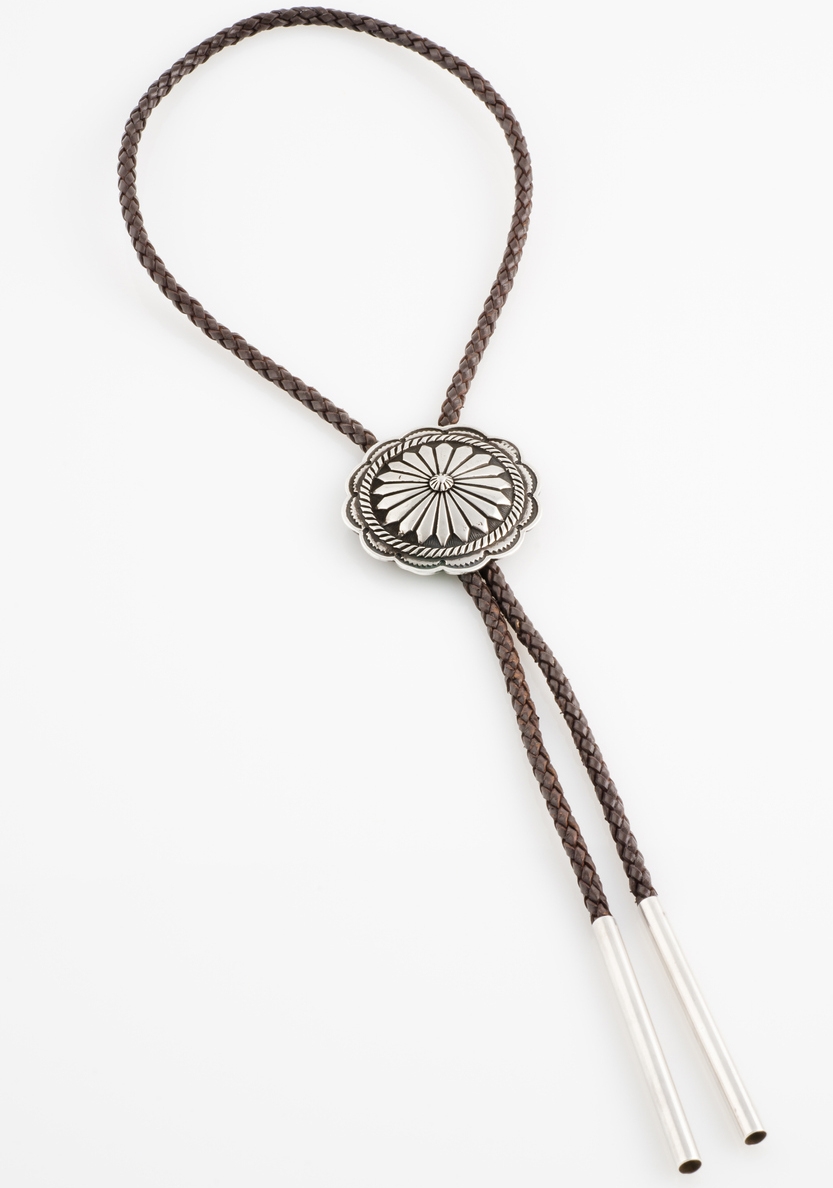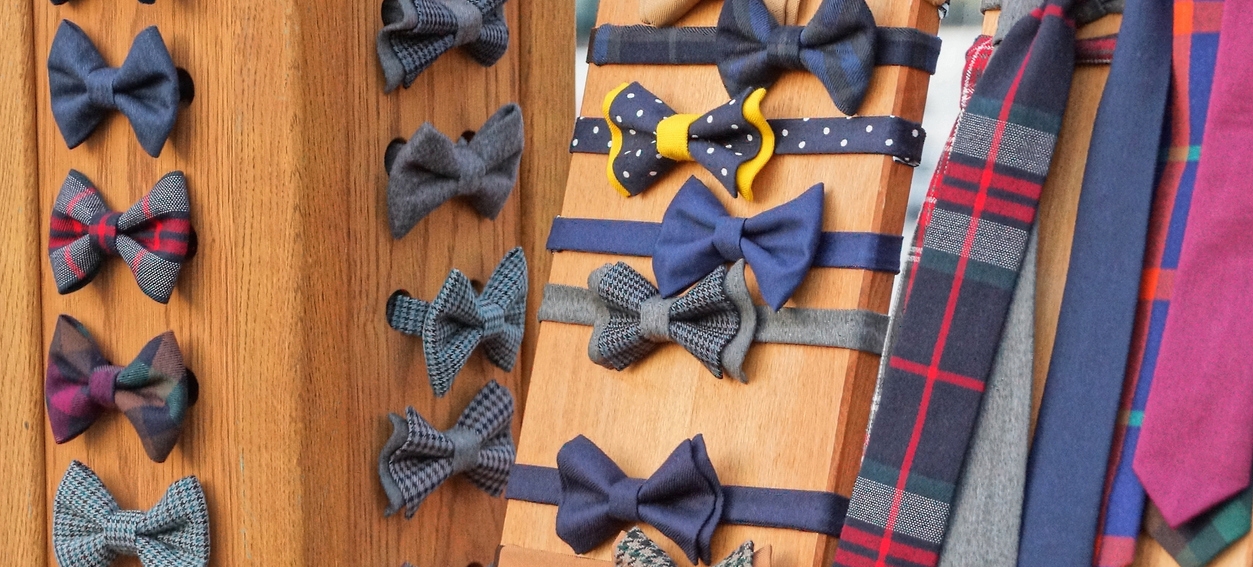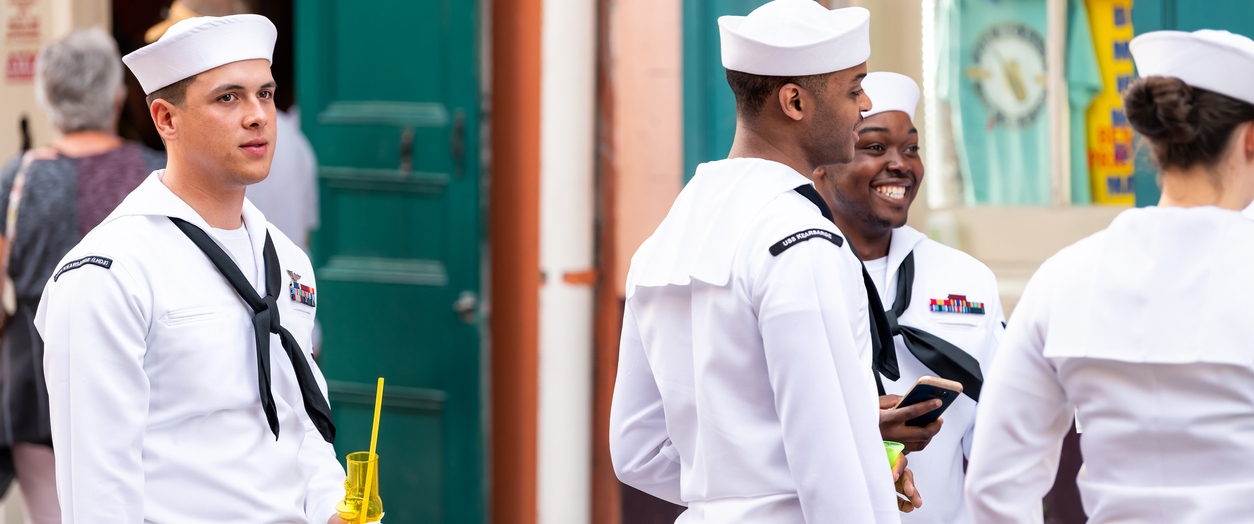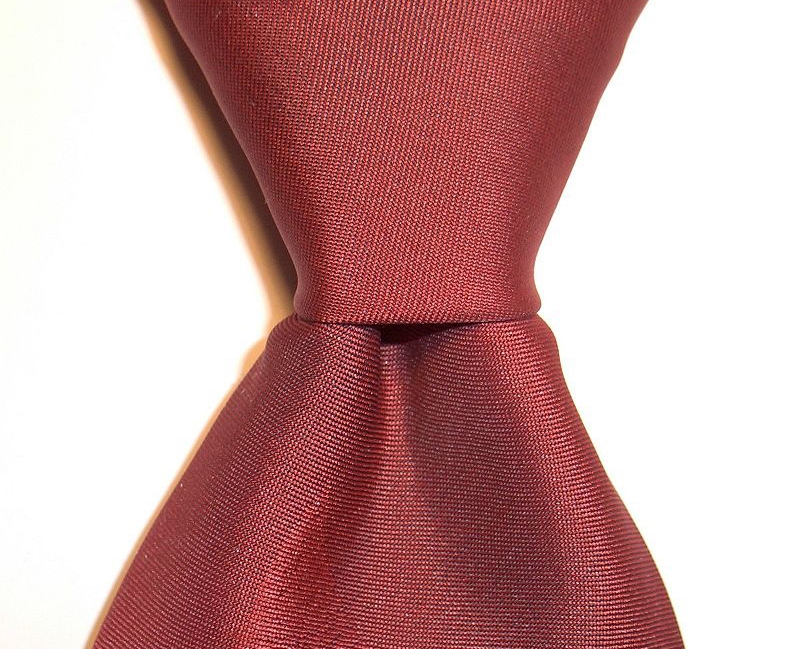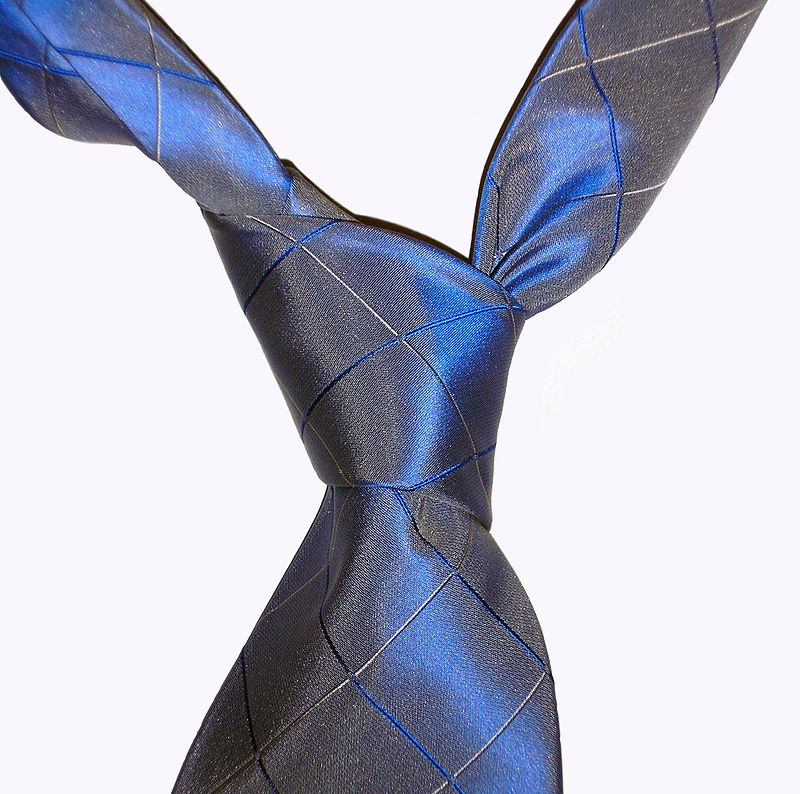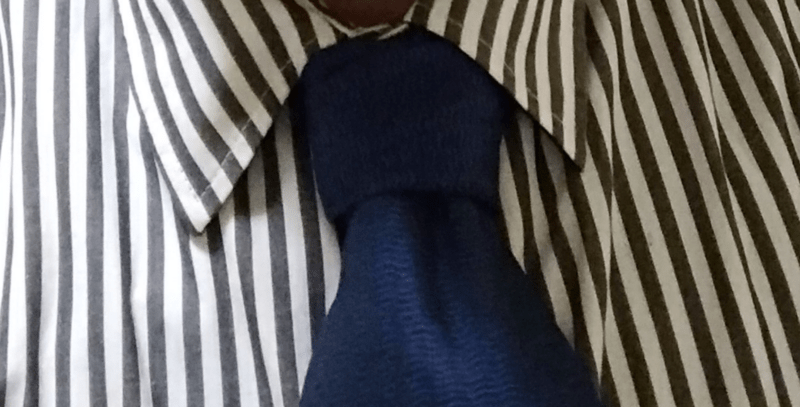Table of Contents
Introduction
Although some men want to break away from the traditional way of clothing, a tie remains as an essential part of his wardrobe. Around the world, neckties are worn by millions of individuals for various occasions. Despite having a straightforward design, the modern necktie has an interesting past. The origin of how the necktie became what it is today has different versions, which make it more interesting to explore. This article will discuss who created the necktie, how it earned a reputation, and how it changed throughout the last four centuries from a element of a soldier’s uniform to the modern tie people are familiar with today.
What is a Necktie?
The necktie was first created as a short scarf. Its development throughout the years has allowed for improvement and innovation in both its design and knot. Men who wear ties are now seen as professionals of society. It is considered the most essential piece of apparel for people; it is frequently worn with suits. The wearing of a necktie exudes exclusivity, power, authority, and professionalism. [1]
An accessory worn around the neck, tucked under the shirt collar, knotted at the throat, and frequently draping down the chest is a necktie or simply a tie. When put on the shirt, it conceals the appropriate buttons and adds aesthetic appeal. Neckties are often used in formal settings, such as the workplace, a wedding, or a courtroom hearing. Fashion experts believe that a necktie can be both a fashion statement and a sign of authority, depending on the wearer. A man’s necktie can also express several psychological traits, such as whether he enjoys sports, is a traditionalist, or is a parent. Neckties, textured, vivid pieces of clothing, have endured centuries of changing fashion trends. [2]
What is the History of Necktie?
The history of the necktie dates to 210 BC. Although King Louis XIII’s hiring of the Croatian army during France’s 30-year war marked the beginning of the necktie’s popularity, certain studies indicate that neckties have their roots in ancient Chinese civilizations.
The Necktie and Its Chinese Roots (Ancient China 200 BC.)
Around 200 BC in ancient China, the first evidence of the use of neckties was documented. Before Qin Shi Huang, it was customary to assassinate the entire court upon the monarch’s passing so they might be able to guard him, even in the afterlife. However, during the reign of Qin Shi Huang, China was devastated by war, and the emperor’s advisers suggested that rather than killing his guards, it would be better to construct life-size replicas so they might serve as his eternal guardians. In 1974, when archaeologists unearthed the grave of Qin Shi Huang, they noticed that each of the “terracotta army” sculptures had a neck fabric that resembled a tie around their necks. It is believed that these pieces of clothing are tokens of valor that their leader had given them. [1]
The Ancient Roman Time (113 AD)
Most men in ancient Rome wore a “sudarium” linen band around their necks or occasionally knotted it around their waists. While Roman senators also wore scarves or “fascalia” to keep their vocal cords warm while speaking. Moreover, the soldiers of the military genius Emperor Trajan are seen wearing them, which leads historians to conclude that the sudarium originated from military garb. Some pharaohs in ancient Egypt and some Oceanian tribes wore garments decorated with valuable stones around their necks. [2]
The Cartwheel Ruff (1583)
The ruff, one of the most recognizable styles of the late fifteenth and sixteenth centuries, was a wide pleated collar that protruded like a wheel around the neck and was frequently reinforced with starch or wire. The ruff was an expensive and time-consuming accessory that was only kept by the elite. Ruffs were favored by royalty throughout Europe because they had the effect of raising the head in a lordly and dignified posture. The ruff was a prestige symbol that required much effort since each time it was worn, the pricey lace needed to be re-starched and adjusted with heating irons. The Puritan pamphleteer Philip Stubbes condemned “huge and monstrous ruffs” in 1583 as a sign of excess. [5]
The Origin of the Cravat (the 1600s)
When French King Louis XIII employed Croatian mercenaries to support his cause during the Thirty Years War, he admired the neckerchief worn by the Croatian mercenaries as part of their official uniforms. The neckerchiefs worn by men in the front lines were made of everyday materials, while those worn by the officers were made of muslin or silk. The ends of the neckerchiefs were either tied in a bow, embellished with a tuft or tassel, or left hanging loosely. The neckerchiefs were employed to keep up the troops’ capes. These neckerchiefs were so well-liked by King Louis XIII that he insisted on wearing it on all royal occasions. He gave this piece of apparel the name “La Cravate” in honor of the Croatian warriors, which is still used today in French to refer to a necktie. After Charles II recaptured the throne, the cravat became popular in England. The cravat gained popularity throughout the following century in Germany, France, and all the English colonies. [3]
The Steinkirk (1692)
The “Steinkirk” was first made famous to fashionable Europeans in 1692 at the Battle of Steinkirk. This neck wear was also common among women, who would either sew buttonholes into their gowns to accommodate the loose ends or tuck them into the laces of their corsets. It was made of a long scarf-like cravat with ends of fringe or lace looped through the jacket’s buttonhole. Long after it lost favor in Europe, the Steinkirk continued to be used in portraits because painters like Joshua Reynolds and Thomas Gainsborough frequently depicted their characters dressed as their forebears had. [3]
The Ascots by Beau Brummel (1784)
In comparison to earlier styles, Beau Brummel’s neckwear was very distinct. Brummel frequently wore ruffled ascots, which swiftly spread worldwide and became the norm in England. Brummel a fashion influencer of his time continued to use neckwear to influence his appearance and the appearances of people around him. The cravat became a significant component of Brummel’s Ascot. [4]
The Neckclothania (1818-1824)
The style of the knot of neckwear also became crucial when the cravat evolved into various clothing items like scarves and bandanas. The most popular knots for tying neckwear were described in Neckclothania, a well-known treatise published in 1818. It also explained when each knot was appropriate. The publication of neckclothania paved the way to the term “tie” as a replacement of the word cravat. [6]
The Transition Period (1900-1920)
At the beginning of the early 1900s, necktie evolution began to move forward progressively. Before that, the cravat had a dedicated and expanding fan base and was very consistent. The changes transpired swiftly once the cravat’s fashion impact became apparent. It started to become standard practice to tie cravats in different ways. The style started to lose ground as comfort, functionality, and fit took precedence, leading to the modern-day shape of ties. [3]
The Macclesfield Tie(1920)
Throughout the 19th century, ties changed and evolved along with societal and fashion trends. In the early 1920s, well-dressed British men preferred the Macclesfield necktie, a silk ensemble of designs created from tiny weaving diamonds, squares, and circles. First, these tiny geometric shapes were created in stark contrasts of gray, black, and white, creating a marquetry impression across the tie’s surface. The Macclesfield tie is from the small town of Macclesfield in the northwest English county of Lancashire, where expert textile weavers are found. The Macclesfield necktie is the pinnacle of rich English taste among the world’s fashionable elite. [7]
The Beginning of Modern Tie (1924)
In 1924s, Jesse Langford developed a brand-new method for making ties that involved cutting the material at an angle and sewing it into three sections. Through his experience in tailoring, he learned that cutting fabric at a 45-degree angle, on the bias, provided flexibility and a more appealing drape, which avoided tie curling. Even now, many still employ this technique. The original version of this, known as “the Langford Necktie,” included ties that were somewhat shorter than those used today. [3]
The Windsor Tie (1936)
The Windsor knot, invented by the Duke of Windsor, was a significant advancement in the history of ties in the 1930s. The Duke of Windsor, regarded as one of the “godfathers of fashion,” loved patterns and textures. The Duke had ties created especially from a thicker fabric to accomplish the extra-wide knot he preferred. He described his current fashion as “dress soft,” which is what most of us would categorize as business casual nowadays. [6]
The Belly Warmer Tie (1940-1945)
Right after the Second World War ended in 1945, a sense of emancipation could be seen in dress and design. Things have started to become a little more playful in this decade. In this Era, Hawaiian shirts and “zoot suits” started to appear. The “Belly Warmer,” an extra-wide tie that may occasionally measure five inches, was created as patterns became increasingly gaudy and brilliant. The belly warmer ties were first made as a joke, but after being spotted on actors like Bob Hope, Alan Ladd, and Danny Kay, the style quickly gained popularity, according to Vintage Dancer. Shortly after, naked pin-up girls painted on a tie’s reverse became a chic secret. [7]
The Kipper Tie (1960-1970)
In Britain, from the 1960s to the end of the 1970s, kipper ties were a popular necktie style. The great width of the kipper knot is one of its most distinguishing features. In the late 1960s and early 1970s, as the slim-fitting suits and thin ties started to be overtaken by the disco-era fashions, the younger generation reappeared with kipper ties. The kipper tie was created in 1966 at the Piccadilly studio of British fashion designer Michael Fish. [7]
The Bolo Tie (1970-1980)
The bolo tie is a necktie made of a leather rope fastened with a metal slide clip. Bolo ties have a distinctive appearance and are a classy option for various occasions. Typically, they are made of polished stones, antique coins, engraved magnets, and metal pins. They are fastened with a metal clasp on the back. A string that runs through the adjustable clasp allows one to change the tie’s size. Typically, leather braided with metal tips is used to make the cord. Victor Emmanual Cedarstaff claims he created this style in the 1940s after receiving a compliment on his appearance while wearing a silver-trimmed hatband around his neck. However, the Bolo took off when it became the states of Arizona’s official neckwear in 1971. [8]
The Ties of the ’90s (1990-1999)
The neckties of the 1990s were slightly more expansive than those of the present. Tie designers most frequently chose a width between 3.75 and 4 inches. While traditional patterns like stripes and solids did exist in the 1990s, bold motifs like paisleys and colored floral prints were more in vogue. This trend has just returned to the world of ties. If one necktie stood out in the 1990s, it was unquestionably the one that Bill Clinton was given by his infamous intern Monica Lewinsky in 1998. [7]
The Modern Ties (2000- Present)
These days, ties come in various widths, cuts, materials, and patterns. It is all about giving the modern man options and letting him exhibit his unique sense of style. Although ties are typically 3.25 to 3.5 inches wide, several designers now provide narrow ties that are 2.75 to 3 inches wide to bridge the gap to the slim tie which measures1.5 to 2.5 inches. Along with the width, new fabric weaves and designs appeared. Knitted ties gained popularity in 2011, and a significant trend of vibrant floral and paisley patterns emerged in 2012 that persisted into 2013. [7]
The most significant events that happened in the transformation of neckwear which is known as necktie or simply a tie at present, is presented in this table.
Era |
Features |
| Ancient China 200 BC. | The Necktie and Its Chinese Roots
The first evidence of the existence of necktie was seen in the “terracotta army”. |
| The Ancient Roman Time
(113 AD |
Most men in ancient Rome wore a scarves called ” sudarium ” and “fascalia”. |
| The Cartwheel Ruff (1583) | The ruff, one of the most recognizable styles of the late fifteenth and sixteenth centuries, favored by royalty throughout Europe. The Puritan pamphleteer Philip Stubbes condemned “huge and monstrous ruffs” in 1583 as a sign of excess. |
| The Origin of the Cravat (the 1600s) | French King Louis XIII admired the neckerchief worn by the Croatian mercenaries during the 30 year war in France. In honor of the Croatian he called this neckerchief the “La Cravate”. |
| The Steinkirk (1692) | This was first work by Europeans in 1692 at the Battle of Steinkirk and continued to be used in portraits commissioned by Joshua Reynolds and Thomas Gainsborough. |
| The Ascots by Beau Brummel (1784) | A neck wear influenced by Beau Brummel’s. Brummel frequently wore ruffled ascots, with the distinctive cravat style. |
| The Neckclothania (1818-1824) | The most popular knots for tying neckwear were described in Neckclothania, a well-known treatise published in 1818. The publication of neckclothania paved the way to the term “tie” as a replacement of the word cravat. |
| The Transition Period (1900-1920) | The evolution of the Necktie began to progressively move forward. The style started to lose ground as comfort, functionality, and fit took precedence, leading to the modern-day shape of ties. |
| The Macclesfield Tie(1920) | In the early 1920s, well-dressed British men preferred the Macclesfield necktie, a silk ensemble of designs created from tiny weaving diamonds, squares, and circles, from the small town of Macclesfield in the northwest English county of Lancashire, where expert textile weavers are found. |
| The Beginning of Modern Tie (1924) | In 1924, Jesse Langford developed a brand-new method for making ties that involved cutting the material at an angle and sewing it into three sections, known as “the Langford Necktie”. |
| The Windsor Tie (1936) | The Windsor knot, invented by the Duke of Windsor, the godfather of fashion, was a significant advancement in the history of ties in the 1930s. |
| The Belly Warmer Tie (1940-1945) | In this Era, Hawaiian shirts and “zoot suits” started to appear. The “Belly Warmer,” an extra-wide tie that may occasionally measure five inches, with naked pin-up girls painted on a tie’s reverse. |
| The Kipper Tie (1960-1970) | The kipper tie was created in 1966 at the Piccadilly studio of British fashion designer Michael Fish. |
| The Bolo Ties (1970-1980) | The bolo tie is the official neck wear of Arizona, a necktie made of a leather rope fastened with a metal slide clip. Victor Emmanual Cedarstaff claims he created this style in the 1940s after receiving a compliment on his appearance while wearing a silver-trimmed hatband around his neck. |
| The Ties of the ’90s (1990-1999) | The neckties of the 1990s were slightly more expansive, bold motifs like paisleys and colored floral prints were dominant style. |
| The Modern Ties (2000- Present) | These days, ties come in various widths, cuts, materials, and patterns. Along with the width, new fabric weaves and designs appeared. Knitted ties gained popularity in 2011, and a significant trend of vibrant floral and paisley patterns emerged in 2012 that persisted into 2013. |
TYPES OF NECKTIES
There are numerous necktie variations available. They all have a specific place in fashion statements. Depending on their preferences, a person can select their preferred tie from all the options. [9] [10]
1. Cravat Necktie – The original style from which the bowtie and neckties descended is the cravat. It is a loose necktie that resembles a cross between a tie and a silk scarf. King and generals use to wear cravat neckties in various occasions; however, at present these types of neckties are only seen in historical dramas movies such as Bridgerton series on Netflix.
2. The Sevenfold Necktie – Sevenfold-folded square yards of silk are used to create this type of necktie. This tie is typically thick due to the method of manufacture, and a nice knot may be easily tied. Seven-fold ties are more expensive than the others and are best used for important occasions.
3. Clip On Necktie – Those who detest the thought of tying knots and then wearing ties would love the clip-on ties. These ties come already knotted with a clip or hook that may be used to fasten them to the shirt collar. These ties are simple, quick, and need no effort.
4. Skinny Ties – The slim neckties are an alternative to four-in-hand ties. A man can seem incredibly edgy and fashionable wearing them with jeans. The Beatles wore this tie in the 1950s and 1960s. People wear these ties to work or social gatherings since they are trendy. They appear professional; however, not everyone looks impressive wearing this tie.
5. The Bolo Tie – These neckties are particularly common in North America, worn by baby boomers who enjoy gold panning. They are made of braided leather or cord pieces. These ties are typically worn for more informal and relaxed settings and are made of things like pricey clips, bottle openers, etc. For hiding the collar buttons, a bolo tie can be worn in a knot beneath the collar.
6. Four-in-Hand Necktie – The four-in-hand necktie is the most popular and well-known of all the other neckties. Since they are generally accessible in a wide range of patterns, colors, and materials, one can purchase these neckties following their preferences. These ties must be worn in the workplace and are suited for some formal occasions. The knots made by the four-in-hand neckties are ones that almost everyone is familiar with. These ties can be tied in various ways and worn in a variety of ways.
7. Ascot ties – Ascot neckties are opulent and unprofessional, making them inappropriate for the workplace. These ties are worn above the undershirt but below the shirt’s collar. The design means a sizable portion of one’s throat line is covered. This tie is tied in several knots looped over while worn. Since they keep the entire tie in place, scarf pins are standard while wearing these ties. The Ascot ties have a stylish, colorful appearance and come in various patterns.
8. Bow Tie – Bowties are symmetrical ties that serve as a pleasant substitute for traditional neckties. They are tiny ties with wide ends and a narrow center. They go well with seersucker suits because they are well known in the Southern States. The bowties are so named because little knots assist them to resemble bows in the middle. These ties are a requirement for real formal gatherings and are typically worn with tuxedos or formal attire. These are appropriate for cocktail parties, formal dinners, galas, and events.
9. Apron Tie – The most typical necktie is the apron style. It is a long, pointed piece of cloth, one end wider and longer than the other. The tie can be done in various knots, some of which are more common or appropriate in formal contexts than others. These knots include the Windsor or Half-Windsor knot, which the Duke of Windsor popularized in the 1920s, and the Persian knot, or the straightforward four-in-hand knot. Apron neckties can be used with formal suits and come in various sizes and styles.
10. Sailor Tie – A knotted scarf or handkerchief was a common custom among sailors, which gave rise to the sailor tie. It is a handkerchief or scarf made of black silk folded diagonally and worn underneath the sailor collar. Either a sailor knot is tied on it, or it is pulled through a blouse strap. It is not a necessity of the sailor costume, but because it frequently appears in musicals, ads, and cartoons, it has come to be associated with sailors.
11. Kipper Tie – A tie known as a “Kipper tie” has an extensive end and a skinny end. The tie is typically made with bright colors and patterns and is meant to be visually loud. In the 1960s and 1970s, kipper ties were resented; but when the fashion of the 1970s briefly returned in the middle of the 1990s, it also became popular.
12. Western Bow-Tie – A variant of traditional bow ties is western bow ties. In the southwest, these are well-liked. It might be too informal and unsuitable for any formal or official attire in other locations.
13. Hunting Stock Tie – Equestrians that ride in show ring hunt fields cover their connections with hunting stock. When worn, they are folded once to fit the neckline of a jacket. Decorative pins are used to link the two ends together.
14. UpCycle Fashion Neckwear – Women typically wear upcycled fashion neckwear, which is more ornamental and colorful than conventional men’s ties. It is typically constructed from a variety of fabrics and embellished with a variety of patterns and styles. It is typically knotted conventionally and embellished with leather, stone, or buttons. Although alternative knotting styles can be used to represent the season or the colors the wearer are attempting to match, upcycled fashion neckwear is often worn in a traditional method. In the 1960s and 1970s, this style of neckwear rose in popularity and was increasingly worn by women in the workplace, particularly stenographers and secretaries. Today’s neckwear is typically made of recycled material and comes in various designs and patterns based on the time of year and current trends. Women still frequently put them on over tops, slacks, and shirts. They are designed to go well with practically every color and, in some situations, are regarded as premium goods.
15. Neckerchief – One underutilized neckwear choice is the neckerchief. It is a different way to wrap a scarf or handkerchief around one neck. In contrast to the sailor’s tie previously stated, this is worn by men from all professions and walks of life and can be created using a temporary handkerchief or scarf. It can be tied in a classic knot, and you can make it as tight or as accessible as you like. It is typically worn for informal occasions and complements casual clothing. As a result, wearing it as part of formal attire is inappropriate. Boy scouts and rangers also wear it as a form of identification.
Types of Neckties |
Characteristics |
| 1. Cravat Necktie | The original style from which the bowtie and neckties descended. It is a loose necktie that resembles a cross between a tie and a silk scarf. |
| 2. The Sevenfold Necktie | Sevenfold-folded square yards of silk are used to create this type of necktie. This tie is typically thick due to the method of manufacture. |
| 3. Clip On Necktie | These ties come already knotted with a clip or hook that may be used to fasten them to the shirt collar. |
| 4. The Skinny Ties | The slim neckties are an alternative to four-in-hand ties. People wear these ties to work or social gatherings since they are trendy. |
| 5. The Bolo Tie | They are made of braided leather or cord pieces. These ties are typically worn for more informal and relaxed settings. |
| 6. Four-in-Hand Necktie | The four-in-hand necktie is the most popular and well-known of all the other neckties. The knots made by the four-in-hand neckties are ones that almost everyone is familiar with. These ties can be tied in various ways and worn in a variety of ways. |
| 7. Ascot ties | These ties are worn above the undershirt but below the shirt’s collar. This tie is tied in several knots looped over while worn. The Ascot ties have a stylish, colorful appearance and come in various patterns. |
| 8. Bow Tie | Bowties are symmetrical ties which are tiny ties with wide ends and a narrow center. These ties are a requirement for real formal gatherings and are typically worn with tuxedos or formal attire. These are appropriate for cocktail parties, formal dinners, galas, and events. |
| 9. Apron Tie | It is a long, pointed piece of cloth, one end wider and longer than the other. These knots include the Windsor or Half-Windsor knot, and the Persian knot, or the straightforward four-in-hand knot. |
| 10. Sailor Tie | It is a handkerchief or scarf made of black silk folded diagonally and worn underneath the sailor collar. |
| 11. Western- Bow-Tie | It is a variant of traditional bow ties. |
| 12. Hunting Stock Tie | Used by equestrians that ride in show ring hunt fields, it is folded once to fit the neckline of a jacket. Decorative pins are used to link the two ends together. |
| 13. Kipper Tie | It has an extensive end and a skinny end. The tie is typically made with bright colors and patterns and is meant to be visually loud. |
| 14. UpCycle Fashion Neckwear | Women typically wear upcycled fashion neckwear, which is more ornamental and colorful than conventional men’s ties. It is typically constructed from a variety of fabrics and embellished with a variety of patterns and styles. |
| 15. Neckerchief | Boy scouts and rangers also wear it as a form of identification. It can be tied in a classic knot, and you can make it as tight or as accessible as you like. It is typically worn for informal occasions and complements casual clothing. As a result, wearing it as part of formal attire is inappropriate. |
The Main Elements of a Necktie
The primary parts of a necktie are the outer fabric, or shell, the interlining and the facing or tipping, which is sewn together by a strong slipstitch. The quality of the materials and workmanship impacts how well a tie will drape and maintain its shape without wrinkles. A necktie’s construction can tell you a lot about its quality, so take a moment to examine it. [11] [12]
1. The Envelope or the Shell.
The tie’s covering is its envelope, any type of fabric or material can be used to create it. Some envelopes, like those made of silk and wool, are also combinations of such materials. An envelope cut at a 45-degree angle from the finished edge of the fabric—or on the natural bias—is the basis of a high-quality tie. If the envelope is not cut in this manner, the tie will not hang straight or develop its full elasticity. Because the tie will not withstand regular use, it will develop irreparable damage.
2. Interlining
A fabric, usually wool, is used as the interlining, concealed inside the tie’s envelope. The interlining provides wrinkle resistance and aids in giving a tie its shape. Wool is used to making the interlining of high-quality ties because it is crease-resistant, soft, and long-lasting. Some producers substitute inferior materials like cotton or synthetics for wool.
3. Tipping
The substance used to complete the tie’s reverse side is known as “tipping.” Numerous manufacturers create the tie tipping using a different, contrasting material from the tie’s body or “envelope.” You might wish to consider the tie’s quality if the tip is made of a lower-grade cloth. A self-tipped tie is made of the same premium silk as the envelope.
4. Loop/Keeper
The band of cloth on the rear of the envelope, known as the “loop” or “keeper,” holds the tail or back blade of the tie in place. Manufacturers frequently use brand labels as keepers, but these keepers frequently break down under the pressures of regular use. The keeper, which serves as the tie’s primary functional component, ought to be made of high-quality material and securely fastened to the envelope. Self-Loop is made of the same premium material as the envelope, which is a solid indication that the maker did not cut corners.
5. Stitching
The final steps are the stitching and crafting that were utilized to join all these components together. The attention with which a tie is made is the most crucial component, along with the patternmaking and fabric-cutting techniques. Bar tacks on both the back and ends of the tie exemplify these hand-crafted accents. Compared to the regular stitch used in machine-made neckties, this hand-sewn detail offers a sturdier joining. This will ensure that it will not rip or tear when it is snugly wrapped around your neck. Additionally, it will enable the tie to take its original form once you have loosened it.
Different Ways of Knotting a Necktie
Ties have aided men in the past in displaying their class, personality, and even power. However, most men find it challenging to tie their necktie perfectly; here are the different ways of tying a necktie which runs from classic to adventurous knot. [13] [14] [15]
A. The Classic Knots
1. Four-in-Hand. The four-in-hand tie knot is the most popular, and for a good reason—versatile, it is slim. Compared to Windsor, it is simpler to wear because of its slightly asymmetrical design. It will look OK with clothing that does not require a tuxedo and is a little easier to tie than the Windsor knots. A short necktie is sufficient for this knot. It is one of the best tie knots for tall guys who want to tie a tie that is a typical length. The tighter asymmetrical shape of the Four In Hand tie knot complements button-down shirts and narrow spread collars.
2. Full Windsor. The Windsor knot was created by the admiring public who wished to copy the duke’s knot style, resulting in a symmetrical and sturdy knot typically worn with a wide-spread shirt collar. This look emanates strength, authority, and confidence and is appropriate for wearing to formal, significant events. It suits guys with facial solid shapes and wide necks best when worn with a traditional, long silk tie.
3. A Half-Windsor Knot. Another simple tie knot is the Half Windsor Knot, due to its adaptability, it is well-liked stylistically. Half Windsor ties appear traditional and laid-back, making them appropriate for work or casual attire. The length of the tie is not used as much in this knot. Because of this, tall and bulky men choose to knot a half-Wainscot rather than a standard-length tie.
4. Simple Knot. In a nutshell, the simple knot is the four-in-hand knot that is more compact and symmetrical. Additionally, you should wear a slender suit with it if you are wearing a skinny tie, in which case you should tie your knot. Tall men who want more length benefit most from the simple knot.
5. A Bow Tie. Elegance and a bow tie go hand in hand. Nevertheless, lately, men’s regular attire has also begun to incorporate the bow tie. In any case, be daring and distinctive by wearing a bow tie. Keep clear from the clip-on, for the love of James Bond.
B. Fancy Tie Knot
The tie knots are also changing, adapting to man’s adventurous nature. These knots improve one’s style and incorporate more finesse and boldness. The quality of the knot will depend on the tie and its pattern. For instance, specific knots may be permitted or prohibited depending on the tie’s pattern, length, and even thickness.
1. The Prince Albert Knot. Although the name suggests that Prince Albert is somehow connected to this type of knot. However, Prince Albert did not appear to be wearing his tie in this knot. However, when worn correctly, this tie style exudes a dignified aura. In contrast to the Four In Hand, this design produces a relatively big knot. However, tightening the knot’s adjustment can create a slimmer and more elegant knot. A simple business function or social gathering can accommodate the Prince Albert Knot.
2. The Café Knot. The Café Knot is challenging to tie but impressive when perfectly done, with excellent symmetry and layering. It was a popular look among café patrons at the beginning of the 20th century, denoting how adept one was in tying knots. In social settings, the Café Knot complements your casual suit nicely.
3. The Van Wijk’s Knot. Artist Lisa van Wijk created a knot with a unique design. It is an adaptation of the Prince Albert Knot, which appeared much earlier. Three loops give a visual twist for a stunning cascading effect. Thus, the Van Wijk Knot is among the tallest wearable tie knots that are now accessible.
4. The Pratt Knot. Pratt Knot strikes the ideal combination between ease of tying and artistic adaptability. Think of it as a hybrid of the Half Windsor and the Four In Hand. It oozes style and is appropriate for formal, informal, and other attire. This knot is a traditional one that has been around for a century. There is a theory that was created by Jerry Pratt, a former US Chamber of Commerce employee. He used this knot to fix the tie of news anchor Don Shelby, which ended up staying with the broadcast forever. However, the history of this knot dates to the 1920s, when Milanese tailors began using it on mannequins. Because of this, it is sometimes referred to as the “Milanese knot.”
5. The Trinity Knot. The Trinity Knot is undoubtedly not a challenge for the timid. With its visually stunning design, the Trinity knot is magnificent. A modern creation called the Trinity Knot resembles the Triquetra knot from Celtic culture. Its development is asymmetrical, and the knot it creates is larger than the Full Windsor knot and more rounded. Start by tying this knot using the narrow end. The initial touches are light and produce knots that are knotted loosely at first but gradually become tighter as they near their conclusion. It is not very easy; do not give up if it takes a few tries.
6. The Ediety/Merovingian Knot. Although it is far older, The Matrix’s character with the same name helped to popularize the Merovingian Knot. The Ediety Knot was its original name and is said to have started in the 1920s. The art-deco influence is evident! Your huge tie’s charm comes in the illusion that you are donning a smaller tie. A lovely idea and sight to behold; you may liven it up by adding a striped tie, which creates eye-catching patterns. The knot looks spectacular; therefore, wearing it to laid-back social occasions is preferable. Just remember that it will take some effort to untie this knot. You may only wear it out after you are prepared to practice.
7. The Eldredge Knot. The Eldredge Knot is considered a piece of art among the knot tie styles. Jeffrey Eldredge invented this tie knot after growing tired of going to work every day wearing the same Four In Hand knot. He made his own using the Ediety knot as an example. It culminates in an asymmetrical arrangement comprising a horizontal strip and four strips with diagonal orientations piled on top of the other. The Eldredge Knot is a unique design that looks great with casual attire. The knot is comfortable on a wide collar. Additionally, muted solid colors work well with it.
8. The Fishbone Knot. A complex, multi-layered knot with some similarities to the Eldredge Knot is the Fishbone Knot. The knot resembles a fishbone. Although it seems complicated, it comprises a series of simple stages. It is an excellent knot with unrivaled symmetry that leaves a profound impression. It would be best if you had a long tie to hack this enormous knot because it is so large. It is appropriate to wear to laid-back social gatherings where you do not mind standing out in this attention-getter.
9. Truelove Knot. A properly executed Truelove Knot resembles a heart and stands out from the other tie knots by having four quadrants. A Truelove Knot requires experience to get right; else, it will look sloppy instead than classy. Do it even on a striped tie to bring out intriguing geometric patterns.
10. Balthus knot. According to legend, the famous Franco-Polish artist Balthasar Klossowski created the Balthus knot sometime in the 1930s. According to legend, he created it somewhat out of boredom and never bothered to wear it frequently. This is true today: the Balthus is a unique knot to don only for special occasions. It is one of the most prominent tie knots, much bigger than the Windsor, and when tied correctly, it forms a conical shape. It is advised to use a long tie, preferably 155 cm long, due to the enormous number of steps that must be taken to complete it.
The Market of Ties
The necktie market is anticipated to increase in the next few years. It is projected that the rising demand from important consumers, including bankers, media professionals, and students, would fuel the market’s expansion even more. Presently, neckties are frequently worn as part of the uniform at some primary schools, business schools, and universities. Military units, clubs, and professional associations, among others, utilize colored and patterned neckties as a sign of membership. To draw in new customers, several necktie producers emphasize product innovation in terms of colors, patterns, materials, and designs. With the increasing demand for neckties in the global market, market players in the necktie market are projected to enjoy profitable growth prospects in the future. According to a global market analysis on the profitability of ties, Ralph Lauren, Drakes, Hackett London, HUGO BOSS, Tommy Hilfiger, and Kiton have been among the top players in the market over the past three years. [16]
Based on a global market anlysis, a significant increase in the market revenue of cravat is projected to occur until the year 2028, then the more formal bowtie, while the classic six and seven-fold tie, remain steady. Considering the age bracket of necktie users, it is projected to be an almost 25% increase in profit among 40-year-old customers by 2028 compared to 20-year-old users. This profitable increase among the 40’s customer bracket could be due to the increase in employability among this group of necktie users; not to mention that it is during this age that most males move to the managerial and executive level of employment, thus increasing the need to don a more formal attire.
Furthermore, in the years 2015 to 2025, the US neckties market is expected to increase with the pre-tied dominating the necktie industry. The pre-tied or clip tie dominance in the industry could be attributable to different factors. First, it is more practical and convenient. The clip-on tie fastens to the collar quickly and effortlessly, and they always have the same length and appearance as the knot. Comfort and safety is the second factor, perhaps the most significant benefits. Because clip-on ties are not worn around the neck, there is less chance of choking incidents, such as when operating potentially dangerous machinery.
Why do Men Wear Necktie?
In the US and Europe, as well as throughout the significant business world, a necktie is one of the most famous gifts for men. Although not all men wear them on all occasions, such as policemen and firefighters, most men’s wardrobes consist of a necktie. This part of the article will explore why men and women wear neckties. [17] [18]
1. Neckties reflect authority and leadership. Neckties send the message that you must be taken seriously by everyone. Not everyone has the grace or ability to wear a tie. In a professional atmosphere, those who wear ties represent themselves as decision-makers and leaders instead of those who do not. Due to the informal nature of the product development environment, formal attire, including neckties, has been outlawed in the booming software and engineering cultures. However, it should be emphasized that when managers, associates, and leaders from various organizations meet, it is still customary for them to wear business attire, such as a suit and coordinating shirt, and tie.
2. Neckties make an excellent impression. Neckties do more than just looking sharp. It also enables the wearer to adopt a new appearance by donning a different tie. Different knots can be used to tie neckties, which can be fastened with clips and pins. Not only can wearing the appropriate tie make you look better, but it also makes you appear more confident. By choosing a unique tie, you may express your sense of style and personality while adhering to the formal dress code.
3. Gives you the ability to appear effective. Nothing compares to the refinement that a tie can lend its wearer. Additionally, according to history, persons who wear ties are likely to have more tremendous respect from other members of society. A tie raises the bar regarding menswear; historically, powerful men have favored ties.
4. Increases Your Confidence. The best way to wear a man’s outfit with pride and draw attention to his skills is probably by wearing a tie. A man’s self-esteem is believed to increase when he is well dressed. As a result, he gets a sense of respect from the people around him.
5. Promotes Professionalism. Those who wear ties can look entirely professional without making any further effort. Therefore, whether you are young or old, wearing a tie radiates professionalism, dependability, and class.
Interesting Facts About Neckties
Today, ties are frequently worn as an essential article of attire. They are everywhere, in both pop culture and commercials. However, people do not necessarily find them engaging to talk about. Here are a few intriguing facts about the tie that you might not know. [19] [22]
- Iran is the only nation that prohibits the wearing of neckties. After the Islamic revolution in 1979, they were outlawed in the small province of Gilan because they were considered a symbol of western decadence.
- Satya Paul design studio and Suashish Diamond Group created the highest-priced tie, sold at about $220,000. The tie was made of 150 grams of 24 karat gold and 271 diamonds.
- Zoran Stankovic, a member of the Academic Cravatica organization from Pula, Croatia, created the most oversized necktie recorded in the Guinness Book of Record. The tie measured 808 meters and was created on October 18, 2003. [20]
- A Grabatologist is someone who wants to collect ties.
- The celebration known as National Bow Tie Day, which is observed on August 28 every year, was created to promote wearing these ties. Some claim that wearing a bow tie helps a person look dapper, while others assert that it makes a person appear more intelligent. [21]
- American ties’ stripes run from top right to bottom left, while those on British ties run from top left to bottom right.
- On October 18, people worldwide celebrate International Necktie Day, including in Croatia and places like Dublin, Tübingen, Como, Tokyo, Sydney, and other cities.
- Yu Zhenzhen of China set a record on the Zheng Da Zong Yi – Guinness World Records Special in Beijing, China, on November 14, 2008, when she tied 13 neckties with a four-in-hand knot in one minute.
- Since Americans spend more than a billion dollars annually to purchase 100 million ties, America is the world’s largest grabatologist.
- The English developed an incredibly thick neck armor that could withstand a sword thrust. Fascinatingly, you can buy a bulletproof tie that can stop even a 9mm bullet.
CONCLUSION
Never assume a tie is just a tie. Over time, ties have evolved into a status symbol. The necktie has long served as a significant symbol of social class and personal style, conveying hints about the wearer’s income, social standing, culture, and intelligence. Men’s neckwear grew more elaborate and unique in the 19th century as men’s suits became soberer and more consistent. They serve as, at best, a reliable anthropological gauge of historical culture and fashion. Essentially, donning a tie and moving around the office is a subliminal signal to the outside world that I’m working on something significant today.” Its development has allowed for improvement and innovation in its knot and design.
However, due to the tech industry’s youthful egalitarianism influence, hoodies and jeans were preferred to suits and ties. Wall Street prioritized “innovation and daring” over the “prudence and sober judgment” that the suit and tie symbolized. Red carpet ties have gradually disappeared, a trend started by a new generation of Hollywood celebrities like Jared Leto, John Boyega, Donald Glover, and Harry Styles.
Due to the influence of modern times, ties were on the decline as formal office attire made way for more laid-back attire. Alternatives to wearing ties also widely worn today. In many restaurants, institutions of higher learning, and workplaces, the collared shirt—whether a tieless button-down or a polo—became the new symbol of formality.
Prudence and sober judgment will always have a place in men’s fashion. Ties will continue to be worn for formal occasions like weddings, graduations, funerals, and courtroom proceedings. They will also be worn in country clubs and cruise ships where rigorous dress requirements still apply. Even the famous Mark Zuckerberg, often seen sporting a causal hoodie, dressed up for his 2018 Senate testimony by donning a tie. Therefore, it is safe to say that although a tie is not as popular as before, most men’s fashion influences are aware that in this current generation, it pays to appear adaptable, open-minded, and calm.
References:
- I am A Useless Info Junkie. Retrieved August 30, 2022 fromThis Is Why Neckties Were Originally Invented – I’m A Useless Info Junkie (theuijunkie.com)
- Cabral, Lauren. April 2021. History of the Necktie | Back Then History. Retrieved August 30,2022.
- Konnig, Anna. Neckties and Neckwear | LoveToKnow. Retrieved August 30, 2022.
- Uncategorized Hendrik. July 2012. Tie-A-Tie. Beau Brummel – Famous Tie Wearer – Men’s Fashion History | Tie-a-Tie.net. Retrieved. August 31, 2022
- Ruffs – Fashion, Costume, and Culture: Clothing, Headwear, Body Decorations, and Footwear through the Ages (fashionencyclopedia.com) Retrieved. August 31, 2022)
- Jackson, Buffalo. November 2020. The History of Windsor Knots | Buffalo Jackson. Retrieved September 3, 2022.
- Workopolis. December 2017. A brief history of the tie – Workopolis Hiring. Retrieved. September 3, 2022.
- Liberty Leather Goods. Bolo Tie – Guide to History, Style, Options, and Fit – Liberty Leather Goods. Retrieved. September 3, 2022
- Madhavi. Kresent! April 19, 2022. Types Of Neckties – Fashion (kresent.com). Retrieved. September 5, 2022.
- Thread Curve. April 19, 2021. 14 Types of Ties You Can Wear (Ultimate Tie Guide) – ThreadCurve. Retrieved. September 5, 2022.
- AKLASU. Learn The Different Parts of A Tie So You Make Smart Choices – Aklasu. Retrieved. September 6, 2022.
- Guy, Derek. Put It On. April 17, 2011. The Necktie Series, Part I: Construction and Quality – Put This On. Retrieved. September 6, 2022.
- Beltran, Sam. August 28, 2017. ESQUIRE. 9 Different Ways to Tie A Necktie (esquiremag.ph). Retrieved. September 6, 2022.
- Nyorani, Catherine. The Coolist. 13 Types of Tie Knots to Master – Different Ways to Wear Neckties (thecoolist.com). Retrieved. September 6, 2022.
- Gentleman’s Café Blog. May 9, 2021. Tie knots: all the most famous knots and how to make them (lanieri.com). Retrieved. September 6, 2022.
- Insight Partners. Necktie Market 2028 By Type, Distribution Channel and Geography | The Insight Partners. Retrieved. September 7, 2022.
- Mcdonald, Cinthia. Ezine @rticles. November 13, 2009. Why Men Wear Neckties (ezinearticles.com). Retrieved. September 8, 2022
- BNS Fashion. December 22, 2019. 5 Primary Main Reasons Why Wearing A Tie Is Important – BNS Fashion (bns-fashion.com). Retrieved. September 8, 2022.
- MenLau September 28, 2018. 10 Interesting Facts About Ties – MenLau. Retrieved. September 8, 2022
- Largest necktie | Guinness World Records. Retrieved. September 8, 2022.
- Holiday Calendar. National Bow Tie Day in 2022/2023 – When, Where, Why, How is Celebrated? (holidayscalendar.com). Retrieved. September 8, 2022
- JustFun Facts. Interesting facts about neckties | Just Fun Facts. Retrieved. September, 8. 2022


